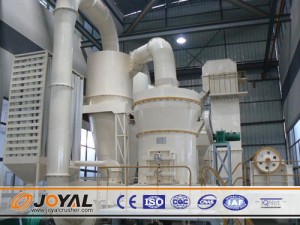

“In-pit comminution includes blasting, rock breaking and continuous mining; scrubbing, which is used as a polishing agent and not primarily for size reduction; crushing, which includes gyrators, jaw crushers, impactors and mineral sizers; and grinding mills, which include the most commonly used semiautogenous grinding (SAG)  mills, autogenous grinding (AG) mills, ball mills and rod mills.
mills, autogenous grinding (AG) mills, ball mills and rod mills.
“The potential energy consumption of a plant when it’s built needs to be addressed in the study phase of a project because comminution and its associated energy requirements can account for between 50% and 60% of the running costs of a mining facility. This is due to the fact that particle sizes need to be reduced to 200 μm for magnetic separation and then down to the size required for pelletising,” she says.
An example of one investigation presented by Naidoo, based on the operational and capital expenditure comparisons of four comminution options, illustrates the advantages of investing in advanced circuitry.
The investigation compared the following options:
• A gyratory crusher feeding a traditional autogenous mill coupled with a pebble grinding mill.
• A gyratory crusher feeding an AG mill followed by a ball mill and a stirred milling stage.
• Two stages of crushing on the front end, with a high-pressure grind roll (HPGR) crusher being used to feed the first magnetic separator – a ball mill and a stirred mill are then used to feed two additional separators respectively.
• And three stages of crushing, with the third, an HPGR, feeding the first pebble mill. After initial separation, a second pebble mill feeds material of 70 μm into a second magnetic separator and then a stirred mill takes it down to 30 μm before the final stage separation.
Of all the options, the fourth was found to offer the lowest energy cost and a net present value of 94%, compared with the first option.
“The use of HPGRs in combination with ball mills reduces both capital and energy costs and significantly improves the energy equation of the comminution circuits, as opposed to using two or three conventional crushers with an SAG or ball mill,” explains Naidoo.
She notes that magnetite banded iron deposits need a mine design to specifically suit the deposit to match the beneficiation processes to the mined ore.
“What magnetite projects have in common is that they are large-scale operations and significant consumers of diesel, power, water and grinding media.
“They involve high capital expenditure entry requirements, low to moderate margins and long-term business models, and, like any mining project, they need significant evaluation and study requirements to achieve long-term value,” she says.